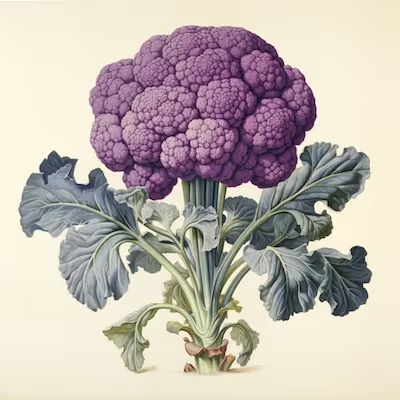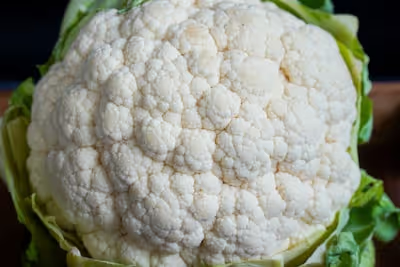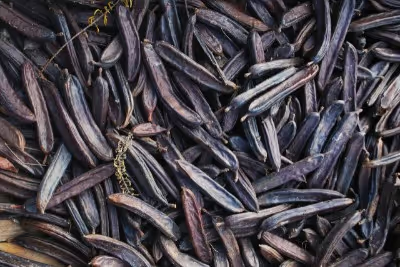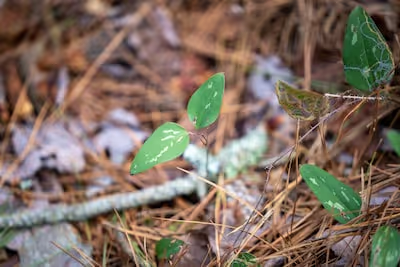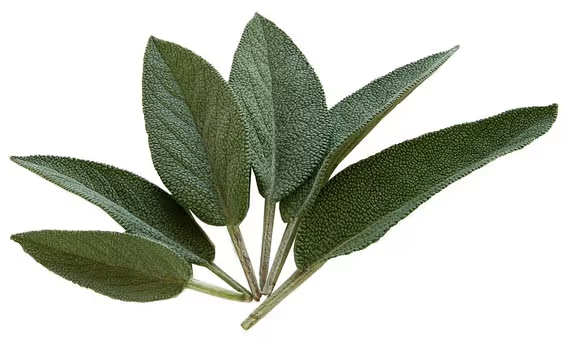Growing Oyster Mushrooms at Home for Flavorful Harvests

Growing Oyster Mushrooms
Growing oyster mushrooms at home demands little space, thrives indoors, and rewards generously within weeks. Requiring minimal setup, these fungi flourish effortlessly on substrates like straw or spent coffee grounds. With their silky texture and earthy umami, oyster mushrooms promise culinary delight—read on to cultivate your own gourmet harvest.
Cheatsheet: Home Oyster Mushroom Bounty Made Simple
🍄 Varieties & Nutrition
Blue, pink, pearl, and golden—all fast growers. High in protein, fiber, B vitamins, immune-supporting beta glucans.
🛠 Tools and Products You’ll Need
- Lignocellulosic substrate (straw, coffee grounds, sawdust, or kits)
- Oyster mushroom spawn (grain or plug)
- Large bag/bucket or grow kit for fruiting
- Misting spray bottle
- Gloves, mask, utility knife
🌡️ Conditions for Best Yield
- Temp: 65-77°F (18-25°C)
- Humidity: 85–95% (mist 2x/day)
- Indirect light (avoid direct sun)
- Fresh air exchange needed
🧑🍳 6 Simple Steps
- Prep substrate: Soak, drain, and pasteurize (140°F/60°C, 1 hr) straw or sawdust
- Cool and mix spawn into substrate (5–15% by weight)
- Pack substrate tightly into bag/bucket (poke holes for fruiting)
- Incubate in dark at 75°F (24°C) for 10–14 days
- Move to indirect light, humid place. Mist daily
- Harvest clusters when caps unfurl (3–7 days after pinning)
💡 Tips for Flavorful Results
- Use fresh spawn for faster colonization
- Do not overwater—damp, never soggy
- Harvest before edges curl for best texture
- Substrate can produce 2–3 flushes per cycle
📈 Facts & Benefits
- Oyster mushrooms can double in size every 24 hours after pinning
- Low calorie, high nutrition, excellent meat substitute
- Grown indoors, fresh year-round, reduces grocery bills
Growing Oyster Mushrooms at Home for Flavorful Harvests
I’ve raised tomatoes in hail and coaxed figs through cold snaps, yet Growing Oyster Mushrooms delivers the fastest, most forgiving harvest in my pantry. The crop cycle is short, the flavor is deep, and the gear is simple.
Why oysters win in small spaces
They digest yard and kitchen waste, fruit on a shelf, and pay rent in umami. The caps sear like scallops, and the stems bring chew without toughness.
“Expect 1 to 2 pounds from a 5 pound supplemented sawdust block, often in two to three flushes.” (Penn State Extension)
That yield-to-footprint ratio beats most greens. I plan a pair of bags per week and eat well all month.
Quick primer: mycelium, spawn, substrate
Mycelium is the white network that colonizes the food source and later fruits. Spawn is the inoculated grain or sawdust you mix into your growing material.
Substrate is the food. Oysters prefer lignocellulosic material like straw, hardwood sawdust, or a soy hull blend that carpenters and feed stores already stock.
Varieties I grow and why
- Pearl or Blue, Pleurotus ostreatus, cool tolerant, tight caps, meaty texture.
- Phoenix, P. pulmonarius, warm tolerant, fruits in summer heat with lighter caps.
- Pink, P. djamor, fast and flashy, best between 70 to 78 F, 21 to 26 C.
- Golden, P. citrinopileatus, aromatic and delicate, likes 68 to 75 F, 20 to 24 C.
- King oyster, P. eryngii, thick stems for steaks, prefers 60 to 68 F, 16 to 20 C and more CO2 during formation for fat stems.
Two reliable paths: kit or from-scratch
Kits trade money for time, fruit fast, and require only misting and patience. From-scratch bags or buckets cost less per pound and scale well once your process is clean.
Look for fresh spawn, a clear date, a cool chain during shipping, and responsive support. Old spawn drags its feet and invites contamination.
Substrate options ranked for home growers
- Master’s mix, 50 percent hardwood pellets and 50 percent soy hull pellets, top yields and fast colonization.
- Supplemented sawdust, hardwood pellets plus 10 to 20 percent wheat bran, reliable and cheap.
- Chopped wheat straw, accessible, lower cost, a bit more prep.
- Cardboard, slow yet works for small trials and starter clones.
- Coffee grounds, risky unless blended and pasteurized, bacteria love it more than oysters do.
I reach for master’s mix when I want steady pounds, and straw when I’m teaching beginners. Both fruit handsomely with good moisture and clean technique.
Prep and pasteurization that actually works
For straw, chop to 2 to 5 cm, soak at 160 to 170 F, 71 to 77 C, for 60 to 90 minutes, then drain to field capacity where a hard squeeze yields a few drops. Lime pasteurization also works at 1 percent calcium hydroxide by weight in cold water, target pH above 11, wear gloves and eye protection.
For sawdust blends, hydrate to 60 to 65 percent moisture, then sterilize if supplemented with bran or soy hulls. If you skip sterilization on enriched substrates, contaminants will celebrate.
Inoculation and incubation
Mix spawn at 10 to 20 percent of wet substrate weight for speed and clean runs. Bag or bucket it, press out air pockets, and incubate at 68 to 75 F, 20 to 24 C, in the dark or low light.
Colonization takes 10 to 14 days for straw and 12 to 18 for sawdust blends. Once the block turns solid white with tiny bumps, it is hungry for fresh air.
Fruiting conditions dialed in
- Humidity: 85 to 95 percent during pinning, 80 to 90 percent during growth.
- Fresh air: keep CO2 under roughly 800 to 1200 ppm for wide caps, or use the rule of thumb that legs elongate when air is stale.
- Light: bright shade, about 500 to 1000 lux, 12 hours on and 12 off. A room where you can read comfortably works.
- Temperature: match the strain, cool oysters 55 to 65 F, 13 to 18 C, warm oysters 65 to 75 F, 18 to 24 C.
Cut X slits in the bag or open a panel and sleeve with a humidity tent. Mist surfaces, not gills, and keep air moving without blasting the caps.
Fruiting chamber options that don’t eat a room
- Plastic shelving unit with a clear zip cover, a small humidifier, and a humidity controller.
- Monotub with side holes stuffed with polyfill, easy for a couple of bags.
- Slitted grow bags on a wire rack inside a bathroom that you can fog twice daily.
- Garage or porch setup in spring and fall, the ambient swing helps trigger pins.
I like a covered rack on casters, easy to clean and move. Keep electrical cords high and water trays low.
Spore load and indoor air
Oysters throw heavy spores as caps flatten, which can tickle lungs. Harvest earlier, run a HEPA purifier nearby, or fruit in a garage or shed with ventilation.
Early harvest gives denser texture anyway. Late harvest tastes fine yet dusts the room.
Harvest, storage, and cooking
Pick when caps are just level and edges still slightly inrolled. Twist the cluster, trim the base, and chill in a paper bag.
Stored at 34 to 39 F, 1 to 4 C, they keep 3 to 7 days. I dry-sauté first to drive off water, then add oil, garlic, and a splash of soy like a weeknight miracle.
Troubleshooting, no drama
- Green patches, Trichoderma, usually from low spawn rate or sloppy pasteurization. Discard sealed and tighten hygiene next run.
- Sour or fishy smell, bacterial bloom. Lower moisture, raise spawn rate, and clean tools with 70 percent alcohol.
- Long stems and tiny caps, high CO2. Increase fresh air or add more holes around the fruiting zone.
- Cracked caps, low humidity. Mist walls or add a second humidifier cycle.
Integrate with the garden
Spent blocks make premium mulch, worm bin feed, or a booster for hot compost. I crumble them under fruit trees, then top with leaves, and the soil loosens by spring.
Straw blocks layered into the bed host red wigglers in weeks. Tomatoes nearby stand taller and need less water.
Costs and yields you can plan around
- Kit: 20 to 35 USD per block, 0.9 to 1.1 kg yield, 2 to 3 flushes, fast turnaround.
- DIY master’s mix bag, about 3 to 6 USD in materials, 0.7 to 1.2 kg yield with fresh spawn.
- Spawn: 10 to 30 USD per grain bag that inoculates 5 to 10 fruiting bags at 10 to 20 percent rate.
I schedule inoculations weekly for staggered harvests. Two bags fruiting at a time covers dinners for four without glut.
Buying guide: features that matter
- Spawn freshness: packed within the past 4 weeks, clean grains, no wet clumps.
- Clear species and temperature range on the label, cool versus warm strains fruit more predictably.
- Pressure-rated grow bags with 0.2 micron filters for sterilized substrates.
- Food-grade buckets if using straw, plus tight lids and a new drill bit for clean holes.
- Humidity controller with replaceable probes, and a fogger you can disassemble to scrub.
Ask vendors for their fruiting photos and failure policy. Good suppliers cheerfully replace duds.
Seasonal notes
Spring and fall suit pearls and blues on a porch, crisp nights trigger tidy clusters. Summer favors phoenix and pink in shaded garages and bathrooms.
Winter runs lean unless you heat the chamber to 60 to 68 F, 16 to 20 C. I group bags close and trap humidity with a clear cover.
Advanced move: clone a favorite oyster
Split a fresh cap, pull a rice grain of inner tissue with sterile tweezers, and press onto corrugated cardboard soaked in cooled boiled water. Incubate in a clean box, then step up to grain when the white fan races across the flutes.
An inexpensive still-air box, alcohol, and a steady hand beat fancy gear. Keep movements slow and flames away from plastics.
Food safety and common sense
Use clean substrates, avoid painted or treated wood, and always cook oysters fully. People with mold sensitivities should grow in ventilated areas and harvest before heavy spore release.
Flavor notes from the pan
Blue oysters caramelize like beef tips and love thyme and butter. Pinks shine in quick stir-fries, tossed at the end to keep color.
King oyster stems crosshatch and sear into steak coins. Golden oysters perfume risotto with a nutty, sweet finish.
Stats and quotes worth knowing
“Oyster mushrooms can colonize pasteurized straw in as little as 10 to 14 days, with fruiting shortly after.” (Cornell Small Farms Program)
“Pleurotus ranks among the most cultivated mushrooms worldwide, prized for rapid growth on agricultural byproducts.” (FAO, Global Mushroom Production Overview)
My field notes that save time
- Weigh water, do not guess. A cheap scale prevents soggy bricks that stall.
- Spawn heavy for beginners, 20 percent gets you to the finish line faster.
- Cut fewer, larger slits in bags for bigger clusters that are easier to mist.
- Harvest at first sign of flattening to avoid spore storms and keep texture tight.
- Compost the base trim with coffee filters and tea leaves, worms party on that mix.
Sources for deeper reading
- Penn State Extension, Growing Oyster Mushrooms, yield and cultivation parameters.
- Cornell Small Farms Program, Specialty Mushroom Production on Straw and Sawdust.
- Food and Agriculture Organization, Global mushroom cultivation summaries, Pleurotus share and substrates.
- North American Mycological Association, Safety notes on cultivation and spore exposure.
Frequently Asked Questions About Cultivating Oyster Mushrooms
What type of substrate benefits oyster mushroom growth?
Oyster mushrooms thrive best on substrates such as straw, coffee grounds, hardwood sawdust, and cardboard. Preparing the substrate by pasteurization or sterilization helps support strong mycelium growth and healthy mushroom clusters.
What environmental conditions encourage healthy mushroom fruiting?
Ideal conditions include high humidity levels around 80–90%, temperatures between 60–70°F (15–21°C), indirect natural or artificial light, and proper ventilation to allow fresh airflow. Maintaining these conditions helps prevent contamination and promotes productive mushroom growth.
How long does mushroom growth take from inoculation to harvest?
From initial inoculation, expect 2–3 weeks for full colonization of the substrate by mycelium. After initiating fruiting conditions, mushrooms usually appear within 7–14 days. The overall timeline averages around 4–6 weeks from inoculation to first harvest.
What steps prevent contamination during mushroom cultivation?
Maintaining proper hygiene and sanitation reduces contamination risks significantly. Use clean equipment, work in sanitized areas, pasteurize or sterilize substrates thoroughly, and frequently monitor growing environments. Providing fresh airflow and correct humidity control also discourages mold and unwanted growth.
How can you determine when mushrooms are ready for harvest?
Harvest oyster mushrooms as their caps become fully developed but before the caps flatten out completely. Mushrooms collected at this stage possess optimal texture and flavor. Gently twisting or cutting the clusters at the base helps protect the underlying mycelium and supports future fruitings.
Can cultivated mushrooms be grown multiple times from one substrate?
Yes, the substrate can often yield 2–3 subsequent mushroom flushes, provided the conditions remain optimal and contaminants are prevented. Flushes beyond the second or third typically yield smaller harvests and lower overall productivity, indicating the substrate is ready to be composted.
Growing Oyster Mushrooms is about respect and rhythm. Start clean. Use clean spawn and pasteurized substrate at field capacity. Hold humidity near 90 percent, keep fresh air moving, and give soft, indirect light. Cooler strains run at 55 to 65°F. Warm strains fruit at 65 to 75°F. Check daily. Small changes matter.
When pins pop, increase air exchange and mist walls, not caps. Harvest clusters as edges flatten with a slight curl. Cut flush, chill fast, cook the same day. Expect two to three flushes with a short rest between. After the last fruiting, recycle the spent substrate as mulch or compost. It feeds beds and keeps your soil lively. For more homegrown fare to plate with your oysters, browse the plant guides. Steady hands, clean tools, and patience. That is Growing Oyster Mushrooms at home.
Pro Tips: Organic Oyster Mushroom Cultivation for Abundant Yields
Optimize Humidity for Maximum Growth
Maintain relative humidity at 80–95% during fruiting. Mist regularly using distilled water to encourage plump, tender caps and higher yields.
Strategically Use Natural Supplements
- Add wheat bran or soy hulls (10–20% by substrate dry weight) to enhance yield by up to 30%.
- Mix in spent coffee grounds sparingly (less than 15%) to boost nitrogen content sustainably.
Temperature Control for Quick Harvests
- Spawn Run: Keep substrate temperature between 70-75°F (21-24°C) to shorten colonization time.
- Fruiting Stage: Lower ambient temperature to 60-68°F (16-20°C) to stimulate dense mushroom clusters.
CO₂ Level Management for Optimal Cap Formation
Promote adequate airflow to maintain CO₂ below 800 ppm. Higher concentrations lead to elongated stems and smaller caps.
Beneficial Natural Pest Prevention
- Scatter food-grade diatomaceous earth around cultivation area perimeter as a barrier against fungus gnats and pests.
- Introduce predatory nematodes (Steinernema feltiae) to organically control fly larvae populations.
Health Benefits Worth Mentioning
- Oyster mushrooms provide notable amounts of protein, fiber, vitamins B and D, and immune-boosting beta-glucans.
- Regularly consuming oyster mushrooms can support heart health, improve cholesterol levels, and enhance metabolic function.
Second Harvest Techniques
- Immediately remove mushroom clusters at base to prompt quicker substrate regeneration and additional flushes.
- Soak substrates briefly (4–6 hours) after harvesting to rehydrate and stimulate subsequent flush productivity.
Find out which plants will thrive in your garden!
Answer a few fun questions and get custom plant recommendations perfect for your space. Let’s grow something amazing together!

start your season
